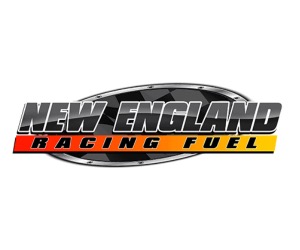(NASCAR Wire Service)
Reid Spencer ~ NASCAR Wire Service

Carl Edwards thinks the Sprint Cup Series is “over the hump” with getting lowered downforce in place (Photo: Sarah Glenn/Getty Images for NASCAR)
CONCORD, N.C. –You didn’t need a test or a complicated data set to understand the effects of NASCAR’s trend toward lower downforce in the NASCAR Sprint Cup Series.
The empirical evidence was right in front of fans and stakeholders alike in last Saturday’s NASCAR Sprint All-Star Race, and it was visible from the start.
From the drop of the green flag, Kevin Harvick and Kyle Busch raced side-by-side for the lead for four-and-a-half laps, swapping the top spot as they battled in close quarters. That’s likely the most prolonged, hotly contested start of a race in more than a decade.
The finish rivaled the start for excitement, with Joey Logano tracking down Kyle Larson and passing him for the win with fewer than two laps left.
For the 2016 season, NASCAR introduced a new competition package that featured a reduction of roughly 900 pounds of downforce from the 2,700-pound baseline from 2015. Through the first third of the season, the 2016 package already has produced some of the most competitive racing in recent memory.
For the All-Star Race, the sanctioning body introduced several refinements, including a reduction in cooling fans and the elimination of rear axle “skew” or offset. The cooling fan reduction will continue for the rest of the season, as planned.
NASCAR already has tested several other changes at Michigan International Speedway, modifications designed to eliminate another 500 pounds of downforce and 125 pounds of sideforce, reducing the effects of “dirty air” and allowing the cars to race side-by-side with greater comfort.
When the series returns to Michigan for the June 12 race, the Sprint Cup cars will feature a rear spoiler with significantly smaller surface area, cut to 2.5 inches in height (a reduction of one inch) and narrowed to 53 inches in width, comparable to the width of spoilers run in restrictor-plate superspeedway races.
The cars also will include a smaller, tapered deck lid fin, designed to reduce sideforce, a neutral rear toe/skew setting and a splitter reduced from five to two inches wide on the sides (with the center section retaining its current dimensions.
With drivers asking for more off-throttle time during a typical lap at an intermediate speedway, the Michigan test achieved that goal. Corner entry speeds were up roughly two miles per hour, with speeds through the corners down 10.5 mph.
“As we took the rule changes and put them in the car, I only got a couple of laps because it started raining, but I was already off throttle a lot more,” said Larson, who participated in the Michigan test. “I think we were about 10 mph slower in the center of the corner.
“I expect the racing to be really good. I think, with you lifting, the groove will move up some. It’s just going to, hopefully, be really exciting racing. I think you can see every race track we have been to this year has been much better racing. That was just a smaller step in downforce. Another step will just make it better, we hope.”
Among all constituencies within the sport, there is strong consensus that the direction NASCAR is pursuing is worth following to an even greater degree.
“There’s a lot of momentum for continuing in this direction,” said Gene Stefanyshyn, NASCAR senior vice president of innovation and racing development. “(The drivers) have jumped on that bandwagon and want more.”
NASCAR is following a five-step validation plan before a new rules package is adopted for 2017. First was the Michigan test, then the non-points All-Star Race. After the June 12 race at MIS, NASCAR will conduct an organizational test (open to one car from each team) at recently repaved Kentucky Speedway on June 13 and 14.
The final step will be the July 9 Cup race at Kentucky.
“The teams have asked us to get out the 2017 rules early,” said Scott Miller, NASCAR senior vice president of competition. “The research is designed to prove out the concept and get the rules package out as early as possible.”
It’s fair to say, however, that the modifications won’t go into effect until the following season, as was the case with the development of the 2016 package last year.
An additional goal is to make the 2017 rules changes as seamless and cost-effective as possible. Accordingly, there won’t be additional engine development required to adapt to the changes, and the Sprint Cup cars will maintain their current body panel surfaces.
The real proof, of course, will be in the product.
“The biggest consideration for us is the quality of the on-track action,” Stefanyshyn said.
Not to worry, says Sprint Cup driver Carl Edwards, a long-time proponent of the move toward lower downforce.
“We’re over the hump,” Edwards said. “We can race now.”



















Remember the Car of Tomorrow (CoT), the first version? That was in development for years and years. That didn’t last long, and went to the second generation in no time. Now up to Gen 6.23x10E4.